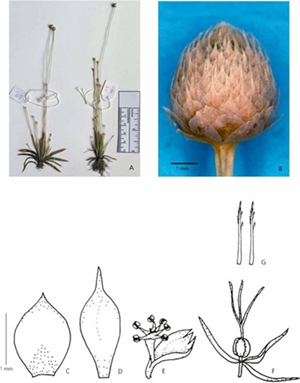A recent paper by Dr Amornrat Prajaksood, Professor Pranom Chantaranothai, and Professor John Parnell has just been published in the prestigious journal Kew Bulletin. Researchers in the School of Botany TCD, together with Thai collaborators, have just described eight species, three subspecies and four varieties of the plant genus Eriocaulon from Thailand, all new to Science.
This paper forms the basis for an account of this plant family for the Flora of Thailand project. The Herbarium of the Botany Department of TCD is one of the main collaborating institutions participating in this project.
Ireland’s link with the Botany of Thailand can be traced back to the early part of the 20thC when a TCD medical graduate, AFG Kerr from Co. Leitrim, became interested in plant collecting. Kerr continued his interaction with the then Professor of Botany, HH Dixon, FRS. and sent Dixon many early collections of plants from that country now housed in the TCD herbarium. Kerr is still ranked as the most important collector of Thai plants.
Commenting on the significance of this publication Professor John Parnell stated that this paper showed how important field study of the flora was as without it most of these species would have remained unknown to Science. The paper also reinforced the extraordinary richness of the Flora of Thailand and showed how many new species still awaited discovery there.
Thailand sits at the junction of two hotspots of biodiversity and has a flora which probably contains about 13 times the times the number of species present in Ireland. The Flora of Thialand project has shown just how rich its forests are in plant species.
Unfortunately, though there are many forest reserves in the country, many plant species are being lost to Science before they are discovered and described. This is because the number of plant collectors working in the forests of Thailand is low relative to the size of the flora.
It is absolutely essential, therefore, that basic field work, i.e. plant collecting, occurs as soon as possible to ensure that scientists know where the greatest biodiversity is located in the country and are able, to help set conservation priorities and delimit accurately the boundaries of nature reserves. This is especially important as climate change is likely to significantly alter the disposition of vegetation in the country.

Fig. Eriocaulon hamiltonianum var. acuminatum. A habit; B capitulum; C involucral bract; D floral bract; E male flower; F – G female flower: F gynoecium and petals, G sepals. All from A. Prajaksood & S. Suddee 318 (KKU). DRAWN BY A. PRAJAKSOOD.
Source: Trinity College Dublin – Botany Research at Trinity College Dublin Discover New Species





